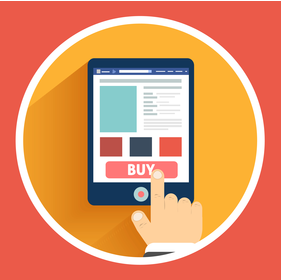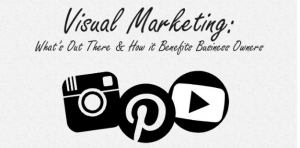Are you tired of seeing ads and “promoted posts” in your social media newsfeeds?
Trust us, you’re not alone. The constant ad interruption is taking its toll, and consumers are not afraid of letting brands know how they feel.
So, what are small/startup business owners supposed to do if investing in ads is increasingly a waste of time and money? After all, when you’re on a bootstrap budget, every penny is precious.
Content marketing agency Column Five created the infographic below for Microsoft. In this infographic, we meet and learn about a small business owner named “Sonny” who successfully taps into the power of content marketing. Sonny plans to become a publisher to reach and engage with his brand’s target audience.
By taking the same steps as Sonny, you can also gain exposure for your brand through online publishing.
Step 1: Zero in on your ideal target market
Begin by determining your niche and where to find it. Do they have a group on Facebook or LinkedIn? Or maybe they’re more active on Twitter? Wherever they are, this is where you want to be as well. That way you can also use the right social media platforms to join in the conversation.
Step 2: Get online
If you don’t already blog, it’s never too late to start. There are several popular online publishing tools, but WordPress is one of the most popular. (In 2014, nearly one-quarter of new domains in the US relied on WordPress.) Most people consider WordPress to be user-friendly, plus it has an excellent support network and abundant resources for “newbies.”
Step 3: Make things interesting
The best marketing content should support and educate the audience rather than sell to them. Of course, finding the right balance is tricky.
Here are a few ways to create great content:
- Use eye-catching, explanatory visuals
As the saying goes, a picture is worth a thousand words. If you aren’t careful, though, and you use someone else’s image without proper attribution, you may find yourself spending thousands of dollars. Fortunately, Dreamstime and dozens of other websites provide images you can purchase for minimal fees. Other sites offer royalty-free and/or public domain images.
In an article via logo/web/graphic design site 99designs, “21 free public domain image websites (use with care),” you’ll find a list of sites with various images which can be freely used by anyone worldwide. It’s important that you follow the directions for the attribution of each image – even with “free” images – to avoid copyright infringement.
- Follow current SEO (search engine optimization) strategies
Write from your heart, of course. But don’t forget that you also need to get your writing in front of readers. By using optimization strategies, you help ensure that people can easily find you and your website online.
- Consider creating and publishing other types of content such as videos and podcasts
According to Invodo, a company which produces video content, 90% of consumers watch online video. Meanwhile, 39 million Americans have listened to at least one podcast.
What if you created YouTube videos or podcasts? Do one or both of these approaches make sense given your product or service and your audience? If you answered yes, go for it.
Step 4: Don’t stop now
To succeed at online publishing you can’t let up even after establishing an audience. Don’t underestimate the importance of keeping up the momentum – your audience will appreciate you even more for maintaining their interest.
Are you ready to turn your brand into an online publisher? Check out this infographic for more useful stats and information:

This post originally appeared on DashBurst Magazine and is being republished with permission.
Digital & Social Articles on Business 2 Community(147)






